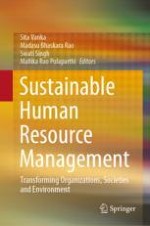2020 | OriginalPaper | Chapter
3. Sustainable Human Resource Management: Making Human Resources More Responsible
Authors : Ekta Sarma, Madasu Bhaskara Rao
Published in: Sustainable Human Resource Management
Publisher: Springer Singapore
Activate our intelligent search to find suitable subject content or patents.
Select sections of text to find matching patents with Artificial Intelligence. powered by
Select sections of text to find additional relevant content using AI-assisted search. powered by
